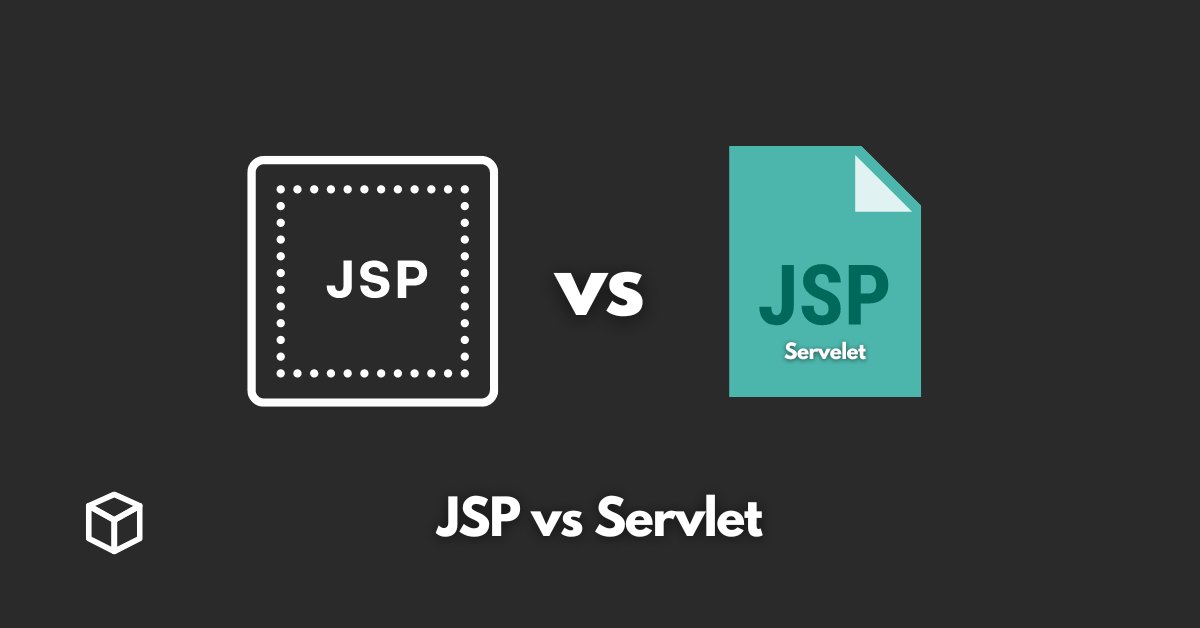JavaServer Pages (JSP) and Servlets are both technologies that are used to create dynamic web pages.
Both technologies have their own set of advantages and disadvantages and are used for different purposes.
In this article we will take a detailed look at JSP and Servlets, compare them, and help you choose the right technology for your web development project.
JSP (JavaServer Pages)
JSP is a Java-based technology that is used to create dynamic web pages.
A JSP page is a text file that contains a mixture of HTML and Java code.
The Java code is used to generate dynamic content, while the HTML is used to create the layout of the page.
Advantages of using JSP
- JSP is easy to learn and use, making it a popular choice among web developers.
- JSP pages are compiled into servlets, which means that they are fast and efficient.
- JSP pages can be easily integrated with other Java technologies, such as JavaBeans and JavaServer Faces (JSF).
JSP Syntax
A JSP page is made up of two types of elements: static elements (HTML or XML) and dynamic elements (Java code).
The Java code is enclosed in special tags, such as <% %> and <%= %>, which indicate that the code inside should be executed.
JSP Life Cycle
The life cycle of a JSP page begins when the page is requested by a client.
The web container then checks if the page has been compiled and if not, it compiles the page.
The compiled page is then executed, and the output is sent back to the client.
How JSP works with web container
When a client requests a JSP page, the web container first checks if the page has been compiled.
If the page has not been compiled, the web container compiles the page and creates a servlet. The servlet is then executed, and the output is sent back to the client.
Servlet
A servlet is a Java-based technology that is used to create dynamic web pages. A servlet is a Java class that is executed by a web container.
Unlike JSP, a servlet does not contain any HTML or XML. Instead, a servlet generates dynamic content using Java code.
Advantages of using Servlet
- Servlets are more powerful and flexible than JSP.
- Servlets have a smaller memory footprint than JSP, making them more efficient.
- Servlets are easier to debug and maintain than JSP.
Servlet Syntax
A servlet is a Java class that extends the javax.servlet.http.HttpServlet class.
The class contains methods, such as doGet() and doPost(), which are used to handle HTTP requests.
Servlet Life Cycle
The life cycle of a servlet begins when the web container loads the servlet. The servlet is then initialized, and the init() method is executed.
The servlet is then ready to handle client requests. When a client requests the servlet, the service() method is executed, and the output is sent back to the client.
How Servlet works with web container
When a client requests a servlet, the web container loads the servlet and initializes it. The servlet is then ready to handle client requests.
When a client requests the servlet, the service() method is executed, and the output is sent back to the client.
Differences between JSP and Servlet
Purpose
The main purpose of JSP is to create dynamic web pages using a combination of HTML and Java code, while the main purpose of Servlets is to handle client requests and generate dynamic content using Java code.
Execution
JSP pages are compiled into Servlets by the web container and then executed, while Servlets are directly executed by the web container.
Syntax
JSP pages use a combination of HTML and Java code, while Servlets use Java code only.
JSP pages use special tags to enclose Java code, while Servlets use methods such as doGet() and doPost() to handle client requests.
Performance
JSP pages are generally faster than Servlets because they are pre-compiled, while Servlets are compiled on-the-fly.
However, Servlets have a smaller memory footprint and are more efficient in terms of memory usage.
When to use JSP and when to use Servlet
JSP is best used for creating the presentation layer of a web application, while Servlets are best used for handling business logic.
Combining JSP and Servlets is a good approach for creating a complete web application as it allows for separation of concerns and better maintainability.
Conclusion
In conclusion, JSP and Servlets are both technologies that are used to create dynamic web pages.
JSP is easy to learn and use, and is best used for creating the presentation layer of a web application.
Servlets are more powerful and flexible, and are best used for handling business logic.
Choosing the right technology for your web development project depends on the specific requirements of the project and the skills of the development team.
Future of JSP and Servlet JSP and Servlet are the foundation of Java web development and still widely used in industry.
But the latest Java web frameworks like Spring, Struts, etc are built on top of JSP and Servlet and provide more advanced features.
So it’s important to keep up with the latest web development technologies and trends.
Resources for Further Learning
- Oracle’s JSP and Servlet Tutorials
- Head First Servlets and JSP by Bryan Basham and Kathy Sierra
- Java Servlet Programming by Jason Hunter and William Crawford




